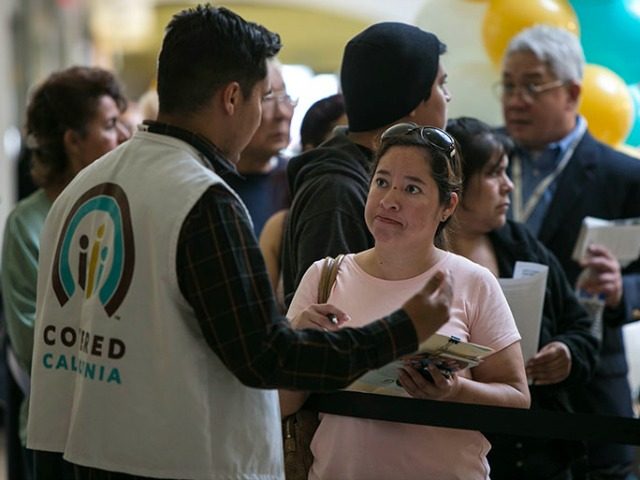Covered California, the state’s Obamacare health exchange, has started mailing notices to 1.3 million subscribers, announcing rate hikes of up to 57 percent for next year.
California health regulators have been forced to approve stunning rate hikes as insurance companies, doctors, and other health professionals continue to flee Covered California’s high costs and rigid health mandates.
California’s version of Obamacare sent its 1.3 million subscribers and prospects a mailer inviting them to go to the Covered California website and use the “Shop and Compare” tool to see just how much health insurance premiums skyrocketed.
The statewide “sticker shock” for Covered California healthcare insurance premiums next year is 13.2 percent — more than triple the roughly four percent increases in each of the previous two years.
Two of California’s biggest insurers — Blue Shield and Anthem — asked for some of the biggest statewide rate hikes. Blue Shield’s premiums are spiking up by an average of more than 19 percent, and Anthem’s rates are leaping by more than 16 percent.
The only reason that Covered California has not collapsed is that 90 percent of Covered California subscribers get subsidies, according to the IRS. Last year, that average federal subsidy for more than 800,000 California households was $5,200 a year, about $436 per month.
This $4.2 billion in Covered California taxpayer subsidy cost does not include the so called “churn.” An excess of 200,000 subscribers initially signed up last year for Covered California, often with a fraudulent name and address. These “subscribers” made their first payment at the start of 2016, quickly used a tremendous amount of service, and then never paid another premium.
But according to Covered California’s chief executive, Peter Lee, everything is fine: “The assistance provided through the Affordable Care Act helped bring health coverage within reach for more than a million people, and it changed lives across the state.”
Covered California healthcare premium rates are set for each region and each insurance company. The average rate increase for the City of Los Angeles and the southwest Los Angeles County region is more than 14 percent for 2017.
Blue Shield-preferred provider organization was chosen by 21 percent of the Los Angeles region participants in 2016. They were authorized by Covered California to raise rates by an average of 19.5 percent next year.
For example, A 40-year-old single person with reported income of $17,820 to $23,760, who chose a Blue Shield “silver” level plan in 2016, paid a monthly premium rate of $122 in 2016 because he received a federal government subsidy of $196 paid to the insurer. But in 2017, the same Covered California subscriber will pay $170 a month, and the federal government will pay a $211 subsidy each month to Blue Shield.
As Jamie Court, president of the progressive Consumer Watchdog headquartered in Santa Monica, told the Los Angeles Times, “We’re paying more for less,” adding, “Insurers are limiting access to doctors and hospitals while also demanding a higher price.”
Obamacare’s California sticker shock is being repeated for 12 million subscribers across every state as insurers have abandoned coverage options in many parts of the nation, due to Obamacare’s wildly expensive plan design and doctors unwilling to treat patients for miserly low reimbursement rates.
Covered California’s Lee tried to understate the sticker shock crisis when he testified to the U.S. House Ways and Means Committee on July 12. Lee claimed that 2017 was just “a transitional year” for Obamacare, with “significant adjustments” across the nation.
Although the official name for Obamacare is “The Patient Protection and Affordable Care Act,” this year’s average national healthcare premium increase is an unaffordable +24 percent. With a rate increase of just 13.2, Covered California subscribers are suffering only about half of the sticker shock as the rest of America.

COMMENTS
Please let us know if you're having issues with commenting.